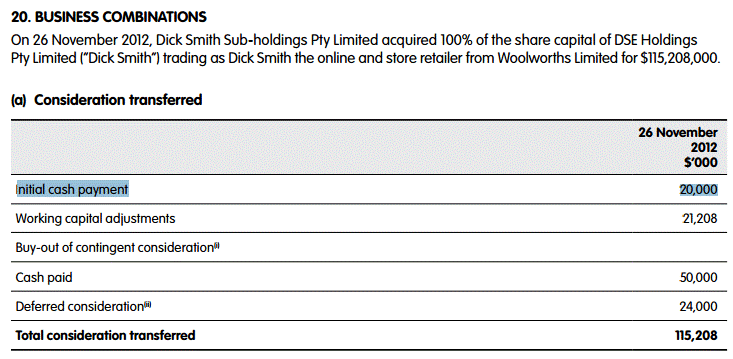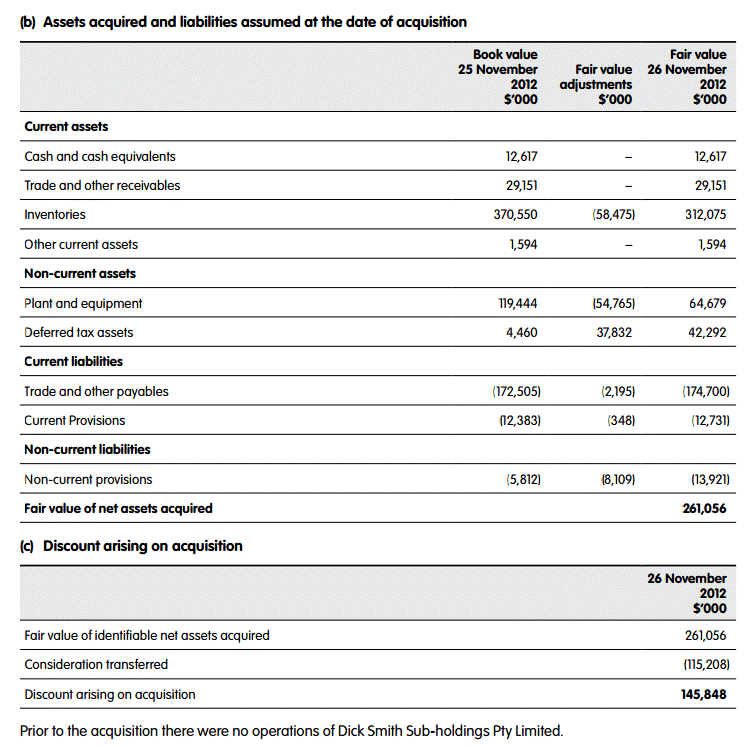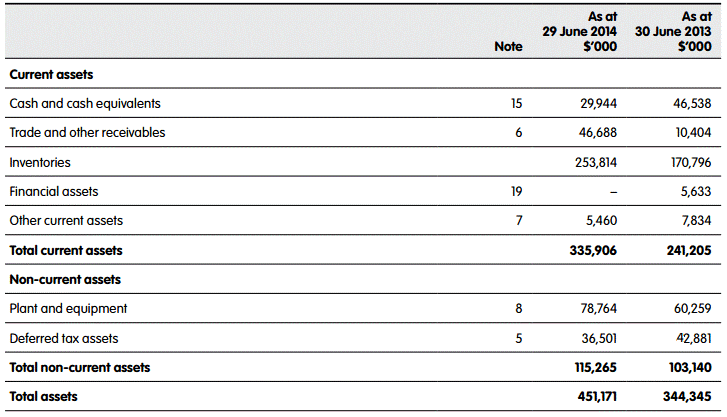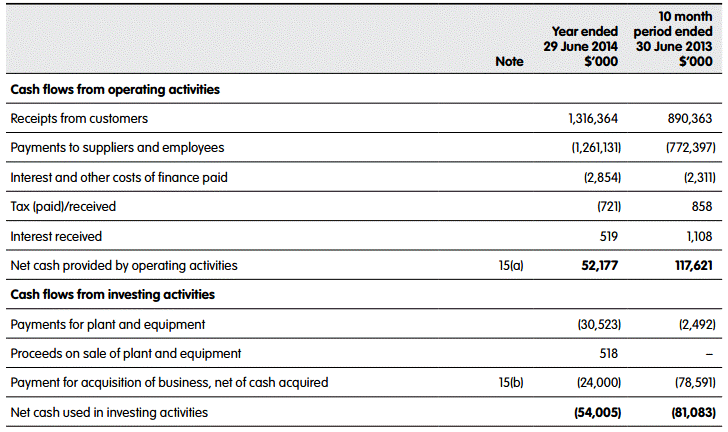We have reproduced this article from Forager Funds - originally written by Matt Ryan - it's a good lesson on the dangers from buying assets from Private Equity firms.
Want to know how to turn $10m in to $520m in less than two years? Just ask Anchorage Capital. The private equity group has pulled off one of the great heists of all time, using all the tricks in the book, to turn Dick Smith from a $10m piece of mutton into a $520m lamb.
Having spent the morning poking through the accounts, we’re going to show you how it all happened.
Firstly, Anchorage set up a holding company called Dick Smith Sub-holdings that they used to acquire the Dick Smith business from Woolworths. They say they paid $115m, but the notes to the 2014 accounts show that only $20m in cash was initially paid by the holding company.
It doesn’t look like they even paid that much, because they acquired the Dick Smith business with $12.6m in cash already in it. Dick Smith Sub-holdings was formed with only $10m of issued capital and no debt, and that is most likely Anchorage’s actual cash commitment.
So if Woolworths got paid $115m and Anchorage only forked out $10m, where did the rest of the cash come from?
The answer is the Dick Smith balance sheet, and this is always the first chapter in the private equity playbook: pull out the maximum amount of cash as quickly as you can.
In this case, first they had to mark-down the assets of the business as much as possible as part of the acquisition. This was easy enough to do with a low purchase price. You can see in the table below, that $58m was written-off from inventory, $55m from plant and equipment, and $8m in provisions were taken.
The inventory writedown is the most important step in the short term. They are about to sell a huge chunk of inventory but they don’t want to do it at a loss, because these losses would show up in the financial statements and make it hard to float the business. The adjustments never touch the new Dick Smith’s profit and loss statement and, at the stroke of the pen, they have created (or avoided) $120m in future pre-tax profit (or avoided losses).
Now they can liquidate inventory without racking up losses. And boy did they liquidate.
At 26 November 2012, Dick Smith had inventory that cost $371m but which had been written down to $312m. Yet by 30 June 2013, inventory has dropped to just $171m.
That points to a very big clearance sale, and the prospectus confirms that sales in financial year 2013 were exaggerated by this. The reduction in inventory has produced a monstrous $140m benefit to operating cash flow, basically from selling lots of inventory and then not restocking.
The cash flow statement shows that Anchorage then used the $117m operating cash flow of the business to fund the outstanding payments to Woolworths, rather than funding it from their own pockets (note that the pro-forma profit was only $7m during this period).
And that, my friends, is a perfectly executed chapter 1: How to buy a business for $115m using only $10m of your own money.
Chapter 2 involves selling a $115m business for $520m, and it’s a little more nuanced. The good news is that, while private equity are focused on cashflow, equity market investors aren’t really focusing on how much cash has been ripped out of the business. All they seem to care about is profit.
So the focus now turns from the balance sheet to the profit and loss statement, and it’s time to make this business look as profitable as possible in the year following the float (allowing them to sell it on a seemingly attractive “forecast price earnings ratio”).
The big clearance sale in financial year 2013 leaves them with almost no old stock to start the 2014 year. That’s a huge (unsustainable) benefit in a business like consumer electronics which has rapid product obsolescence.
Remember that marked down inventory? Most of it was probably sold by 30 June 13 but there would still be some benefit flowing through to the 2014 financial year.
Remember the plant and equipment writedowns? That reduces the annual depreciation charge by $15m. Throw in a few onerous lease provisions and the like, totaling roughly $10m, and you can fairly easily turn a $7m 2013 profit into a $40m forecast 2014 profit. That allows Anchorage to confidently forecast a huge profit number and, on the back of this rosy forecast, the business is floated for a $520m market capitalisation, some 52 times the $10m they put in.
Anchorage were able to sell the last of their shares in September 2014 at prices slightly higher than the $2.20 float price and walk away with a quiet half a billion. Private equity are renowned for pulling off deals, but if there’s a better one than this I haven’t heard about it.
Chickens home to roost
Of course, all of the steps taken above have consequences. By the end of 2014, inventory had increased to $254m, with new shareholders footing the bill for repurchasing inventory. This should have resulted in poor operating cash flow, but most of this was funded by suppliers at year-end, with payables increasing by $95m.
Come the end of 2015 financial year, however, it really comes home to roost. Operating cash flow was negative $4m, as inventory increases further and suppliers demand payment, decreasing accounts payable. The business is required to take on $71m in debt to fund a more sustainable amount of working capital. As the benefit of prior accounting provisions taper-off, profit margins fall, and the company reports a toxic combination of falling same-store sales and shrinking gross margins in the recent trading update.
Following a profit downgrade yesterday, the shares are now valued by the market at $0.77, and investors in the float are sitting on a 65% loss of capital from the $2.20 float price.
This float, as we pointed out in Dick Smith Takes A Bath, Comes Out Nice and Clean, smelled funny from the very beginning. Sorry Dick Smith investors, you’ve been had.




